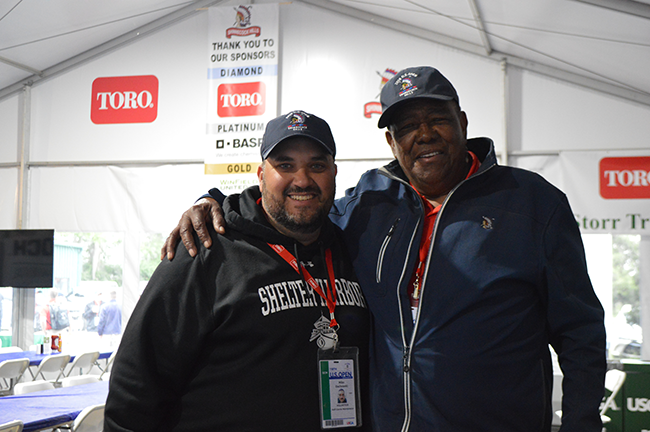Too far in protecting par?
 With the recent news that Shinnecock Hills Golf Club, Southampton, N.Y., will see its fairways narrowed for the 2018 U.S. Open, we again encounter the effort to protect par by narrowing the golf course.
With the recent news that Shinnecock Hills Golf Club, Southampton, N.Y., will see its fairways narrowed for the 2018 U.S. Open, we again encounter the effort to protect par by narrowing the golf course.
After recent work by Bill Coore and Ben Crenshaw that saw some Shinnecock fairway widths restored to 60 yards, this is sad news, as we see a great course defending par instead of offering a varied test of golf. Hosting a major event historically has meant changes to courses, but for the most part they were improvements to the course, not an effort to make the course play harder. In recent years, there has been a noticeable change in course presentation regarding fairway width, rough, and most notably, course length.
But this apparently is not enough, as we see courses adding yardage as they prepare to host an Open. Shinnecock hosted the Open in 2004, and the course played to 6,996 yards. What will yardage be for the 2018 Open? Before I get to that, let’s look at how the USGA and the R&A define how much farther the ball is going.
The USGA in 2016 released a distance report that detailed 2003-2015 driving distance information from the seven professional tours around the world. That data demonstrated increases of roughly .2 yard per year for four of the tours, while the other three tours decreased by the same distance. So, by USGA standards, Shinnecock would need to add roughly 2.8 yards to account for the increased distance golfers have been hitting the ball in the 14 years since the last time the venue hosted the Open.
However, the yardage announced for Shinnecock and next year’s Open is 7,439 yards, a 443-yard increase since the last Open. That is 440 yards longer than would be needed, using the USGA numbers of a .2 yard-per-year increase in driving distance. Something just is not making sense here. They’ve basically added another par 4 to the course to address the latest driving-distance figures.
This is nothing new. We saw an increase of more than 450 yards for Merion Golf Club from the time that venue hosted its previous Open in 1981. A more recent example is Pinehurst No. 2, which hosted its first Open in 1999, has hosted it twice since then, and has seen a 390-yard increase to 7,565 yards.
Looking at yardage from a historical perspective paints a picture that shows the ball going farther and courses being lengthened to address it. The first U.S. Open to be more than 7,000 yards was Oakland Hills in 1937, at 7,037 yards. It would take 60 years to break the 7,200-yard barrier at Congressional in 1997 at 7,213 yards. Ten years later, the Open at Oakmont saw the first course at more than 7,300 yards, playing then at 7,355 yards. One year later, Torrey Pines played to 7,643 yards! Then there’s this year at Erin Hills, where the course played to 7,741 yards.
Just looking at these yardages shows that since 2007, the USGA has added 400 yards to the courses that it identifies as U.S. Open courses.
Yes, it’s true that competitors don’t play to the full yardage listed on the scorecard, but the addition of this yardage is a response to how far the professional golfer is hitting the ball today, which allows the holes to be played at an increased distance.
Then you throw into the setup narrowed fairways, like what they did at Merion and Olympic, long rough with multiple heights of cut, and greens that play firm and fast, and you have a stiff test of golf! But is it setting the right precedent for the good of the game?









